( We call 'weed wackers', 'strimmers' in the UK) .
We bought a much longer electric flex a couple of weeks ago because OH is slowly erecting a fence and the cable we had was much too short for him to use an electric drill. At first we thought we would just see if we could borrow the extension cable from a neighbour but then I realised it would be better to buy one ourselves as then I can use the strimmer and the hedge clippers in the veg plot and beyond as well.
Anyway,the plan worked well because I lopped off a lot of bramble and nettles straight after we bought it and this week,the strimmer helped hugely in tidying up the paths and weedy growth down there.
The whole thing from getting out the mower, to putting away the Strimmer, took about 3 1/2 hours with a short 15 minute intermission while I discovered why the power wasn't getting through towards the end of mowing.
It turned out to be a break in the wire where it fits into the plug ,invisible because it had broken inside the plastic cover of the cable but not too frustrating because having eliminated everything else,it was the only thing left .
On Sunday, I got out the 2 Wheel hoes again.
First I used the cultivating teeth to loosen up my latest cleared bed, then the little rake (it's actually a bit too small) was fitted on, to clear the roots.
Lastly,I made two furrows with the ridger,one on either side of the bed.
The Tomatoes were then spaced out in the furrows and their pots put alongside them.
A bamboo cane was planted on the other side and I covered each plant using a trowel so I could right the plants individually and make sure the pots didn't get filled with mud.
I ran out of canes but there were plenty of branches lying around under the trees from our hedging escapades so that was no problem.
It rained quite hard for most of the rest of the day so they got a good watering in. Eventually they will be watered through the pots,hence their being planted beside one each.
The idea is that the roots are the part of the plant that needs the water and if you water straight into the pot, it gets there, rather than evaporating . We have used this method before to good effect.
I haven't grown tomatoes for a couple of years.
One year we had blight which usually affects a whole area as it is air born.
Last year I didn't grow anything at all because of working from home becoming all encompassing.
Next I used the stirrup hoe on the other wheel hoe to weed everywhere it would fit.
I can sort of weed the onion beds with it but when I planted them out last Autumn, I forgot to measure how wide the Jalo was and so there are a few bits where only a hand hoe will fit.
The Comfrey is beginning to show at last!
It is that little bright green leaf beside the umbrella-stay which I put there to mark where each piece of cutting was planted and hopefully keep OH's giant cloddies off it ,not to mention the cats.
There are 12 pieces in there and so far 6 are peeping out.
In the Autumn,I will make cuttings myself from the older clump that was planted about 5 years ago.
I wanted that clump to be well established before dividing it because despite having bought it from the HDRA and receiving 10 cuttings, only 3 or 4 came up.
Eventually I hope to line the edge of the plot using cuttings as it is so useful and because we have the Russian Comfrey variety, it is non invasive.
After the weeding,I whooshed the Jalo up and down between the spuds and then with the ridger still on the other Jalo (hence the usefulness of having two).
I swooped between the rows again and tidied them up.
That may well be the last earthing up they need this year because the canopy of leaves will soon meet overhead and once it does,the weeds are not such a problem.
Here they are from about 2 weeks ago. They leaves are much more prolific now.
The weeds on the right are strimmed off now too and the left hand path is strimmed.
More about the Victorian seeders and the Jalo Gardener Hoes
I managed to get a picture of the inside of the victorian seeder at last!
This is looking down with the front of the hopper at the top of the pic.
The hopper is bottomless and there is a sliding plate below,on which it sits fairly snuggly.
It isn't really easy to see but there is a bullet shaped hole on the sliding plate .
This is set to almost fully open in the picture and the white shape at the bottom is the floor of the shed seen through the bullet shaped hole and the seed chute beneath.
Here it is from the side.
The Wheel has prongs all around the hub.
There is a metal pointer which rests on the prongs and when the wheel rotates, the pointer is forced up and down.
At the other end of the pointer is a bolt with an adjustable knob.
The bolt is connected to the slider plate with the bullet hole in it.
So when the pointer is forced up and down, the plate must push backwards and forwards under the hopper.
A strong spring makes sure the pointer stays against the wheel prongs.
When the plate is in the forward position,the hole is shut because it is no longer under the hopper.
When the plate is back, the hole is open and depending on where you have adjusted the knob, it allows a seed or some seeds to drop through.
There is no adjusting for distance between seeds but as the plate takes longer to expose the complete hole when planting bigger seeds, the distance is further apart.
My French beans were around 4" apart when they emerged. There were a few skipped places but the cats had been in and scratched up a lot of the bed during the night and I had to keep pushing seeds back in for a few days.
Originally I didn't have the cardboard in it but the seeds got left at the back of the hopper too often so the cardboard is sitting on the little prong which is on the slider plate behind the hole (I assume to stop the plate from shooting out too far).
The cardboard shoots forward as the sliding plate moves and that helps to bounce the seeds to the front.
It needs a lid else the seeds sometimes leap out of the top due to the springy action.so I cover it with a plastic bag and hold it on with elastic. This works very well as you can see when it is empty and if you lay the seeder down,the seeds don't all tumble out.
The seeder in the picture is probably the older of the two as it has' Le Butt of Bury St Eds' on the side.
The maker is Josiah Le Butt who invented it in 1869.
I made the hopper on this one as the original had broken off and was gone.
The other one is not branded at all and the wheel rim is flatter. The original lid and hopper are still strong.
I have a metal shelf fitting for a stand for the two seeders and the Jalo wheel hoes.
It means they can all stand in the corner of the shed near the door and not take up too much room.
In the picture, the stirrup hoe is still bolted to the older Jalo and the Ridger is fitted onto the bracket I made on the other one.
The Hoe with the ridger is now painted and de rusted and looks much better than it did when I got it.
What I originally thought was a thicker handle ,was in fact just layers of thick blobby paint .
The two hoes are almost identical now it is painted.
The only difference I can see, is the wheel on the one,has a star pattern (you can just see it in the photo ).
The other is smooth.
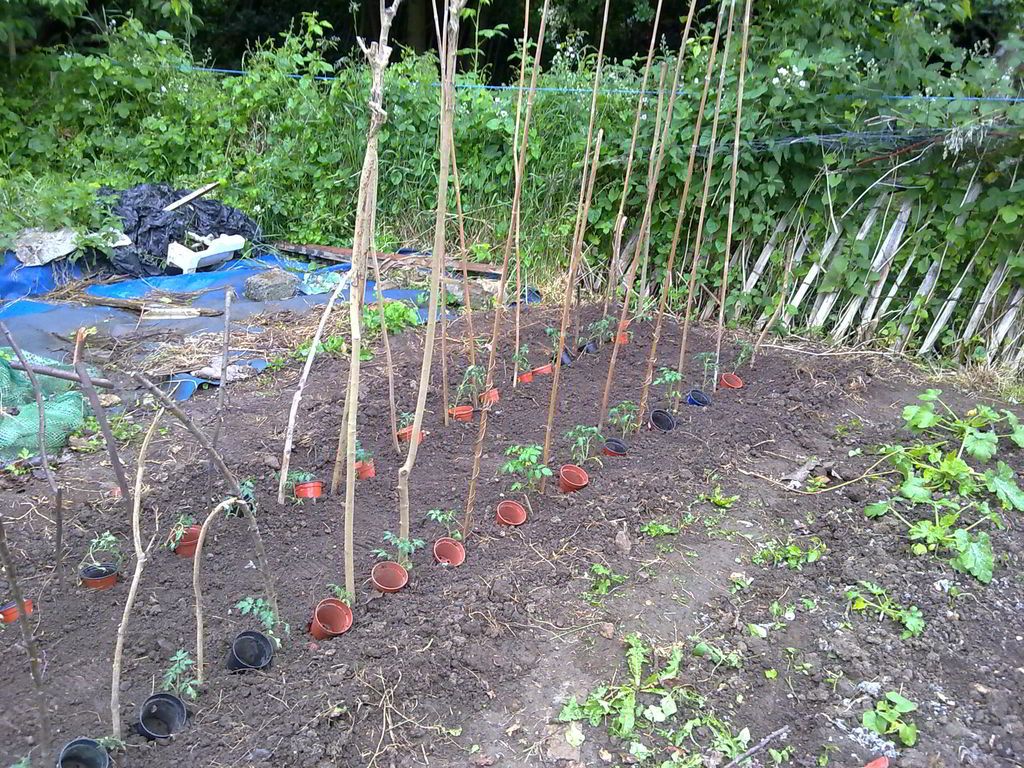
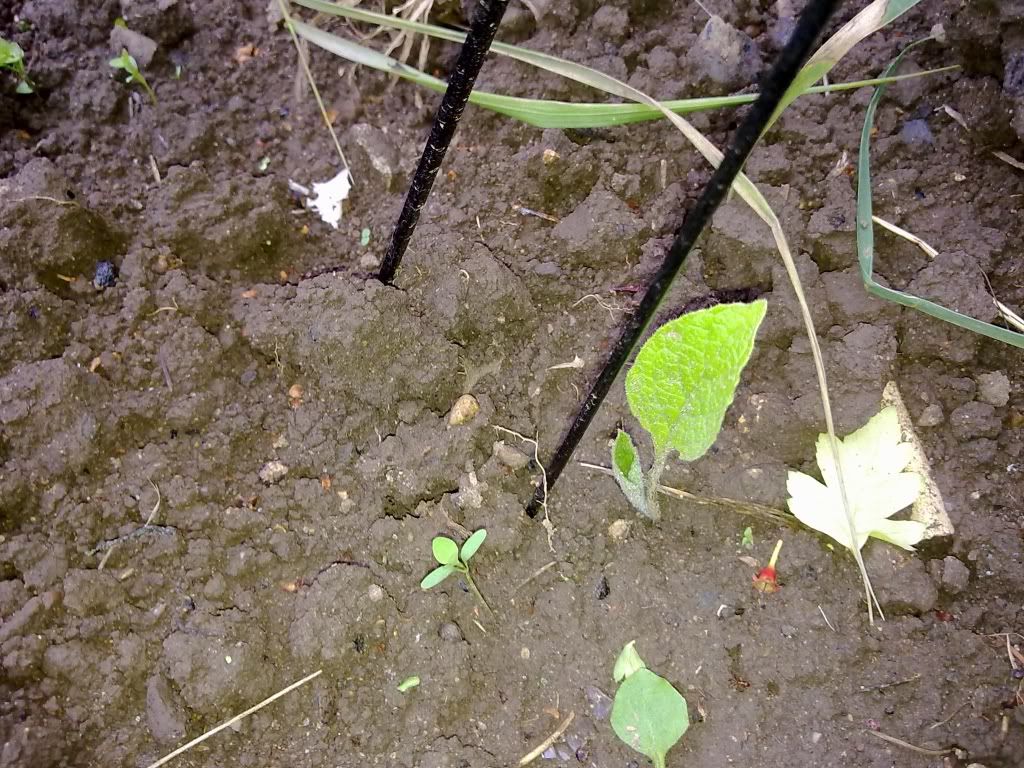
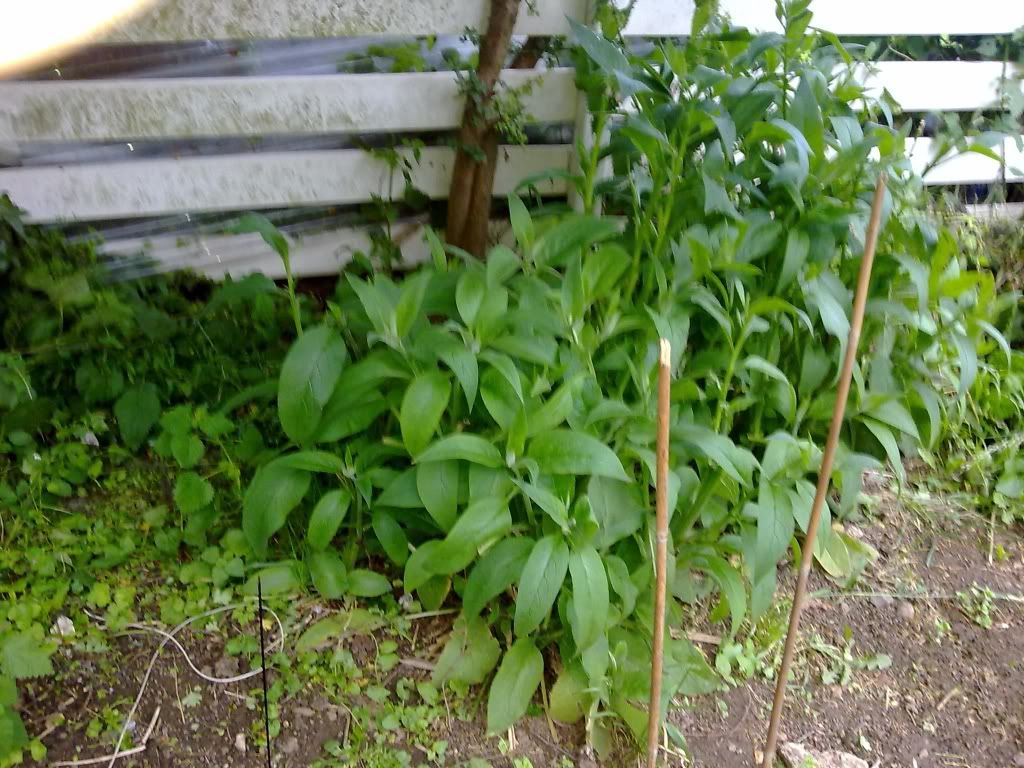
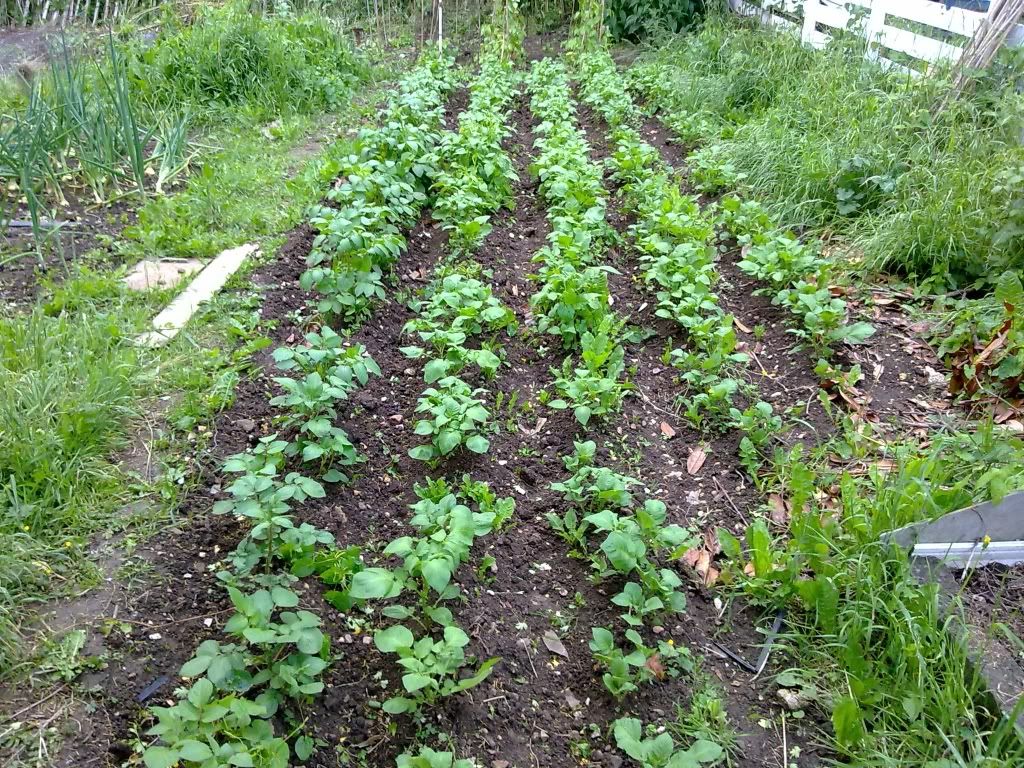
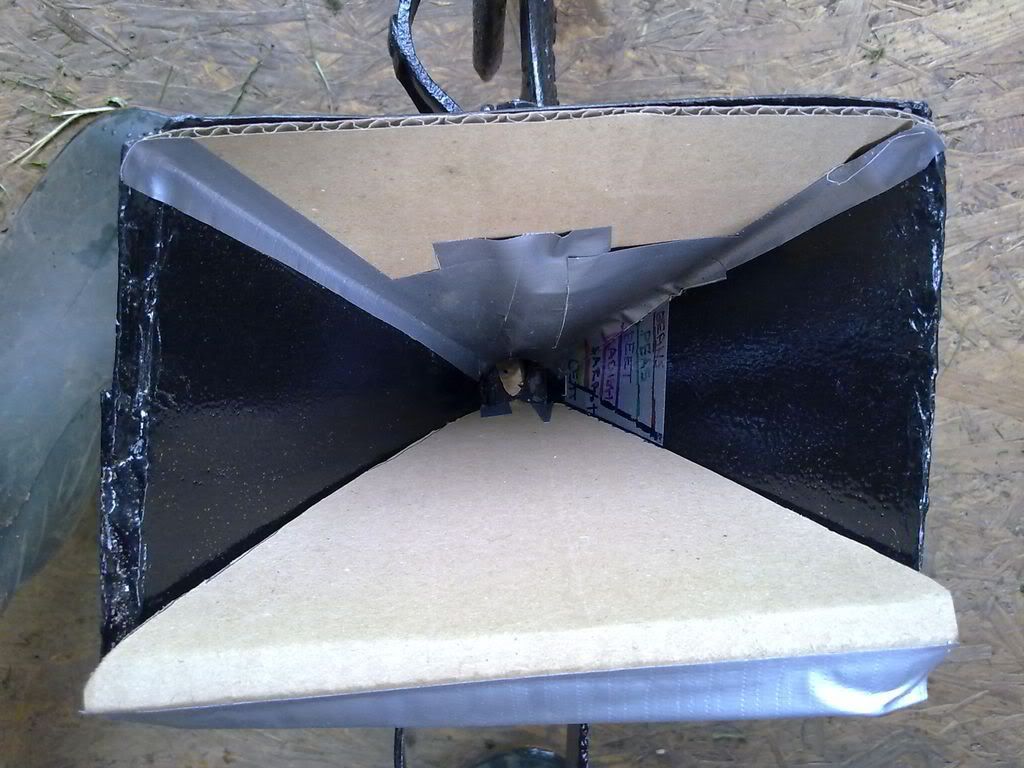
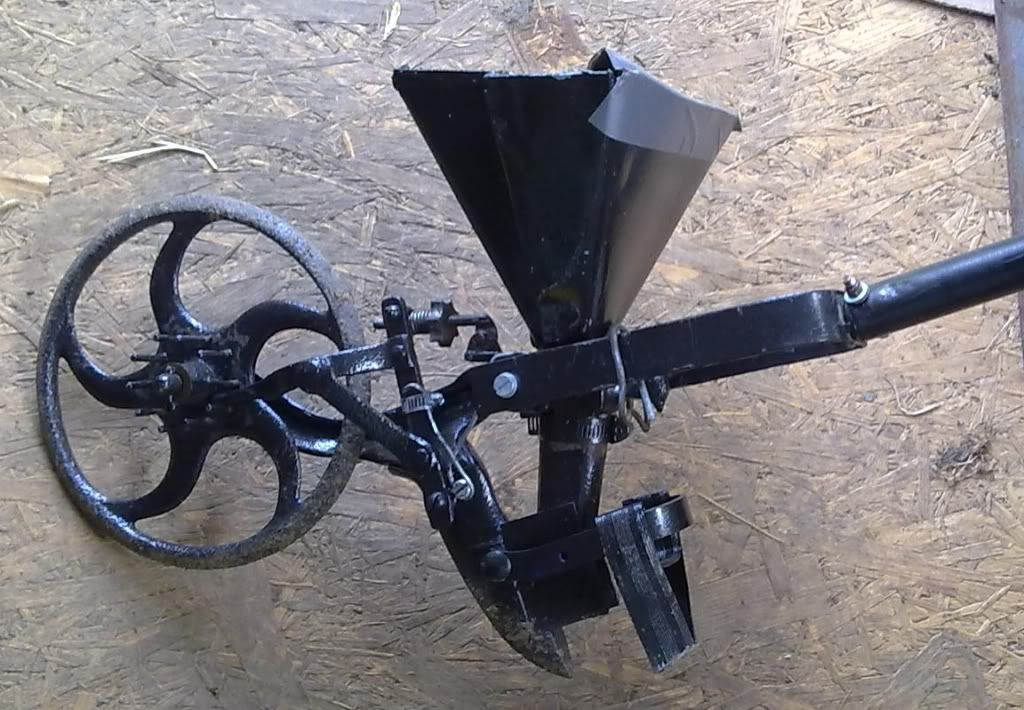
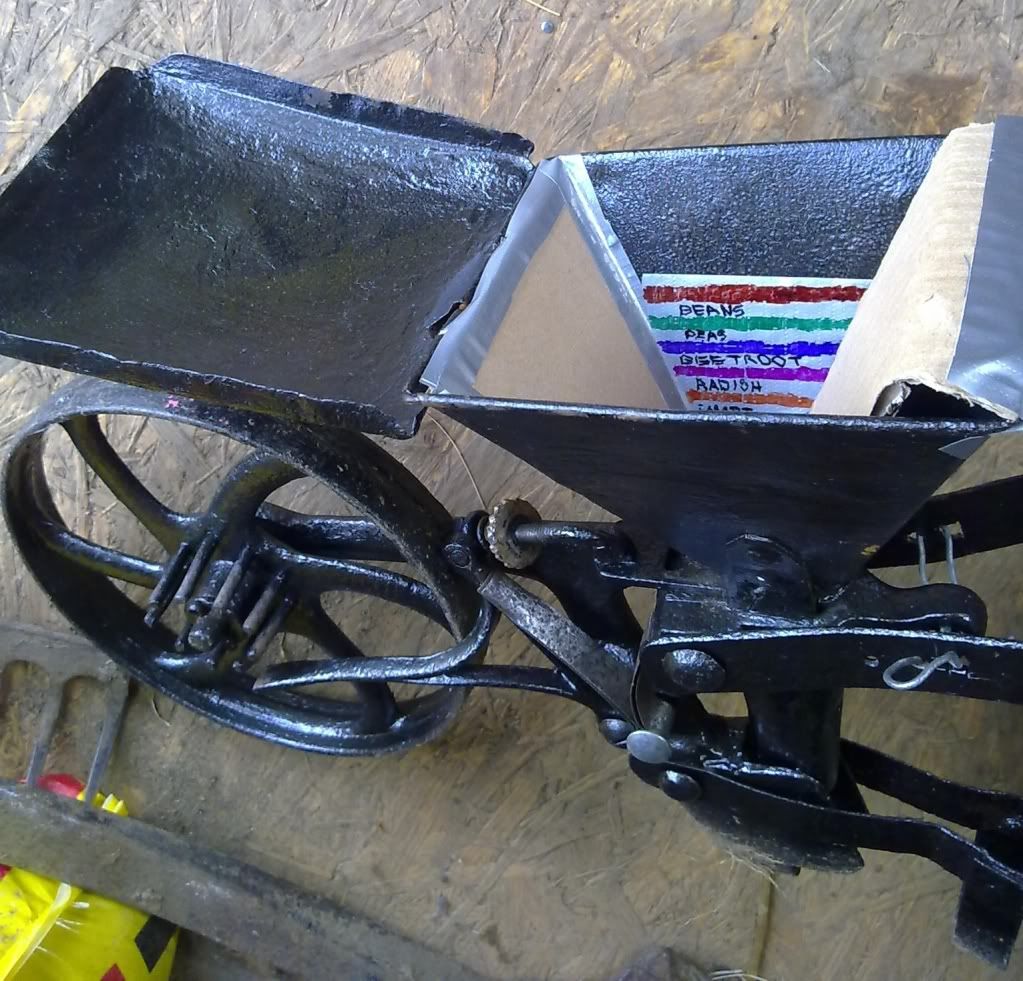
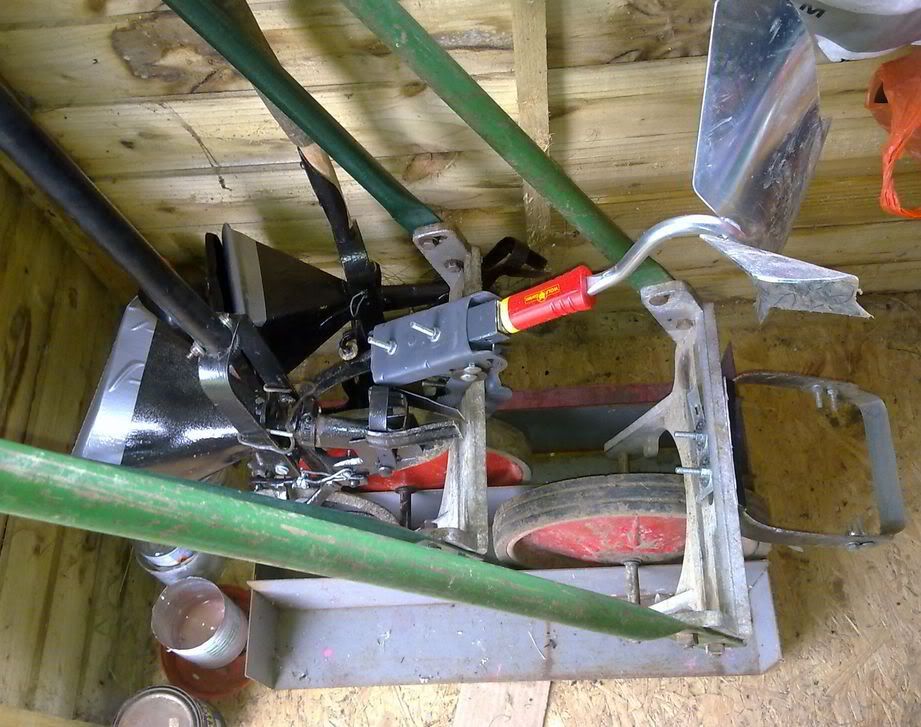
No comments:
Post a Comment